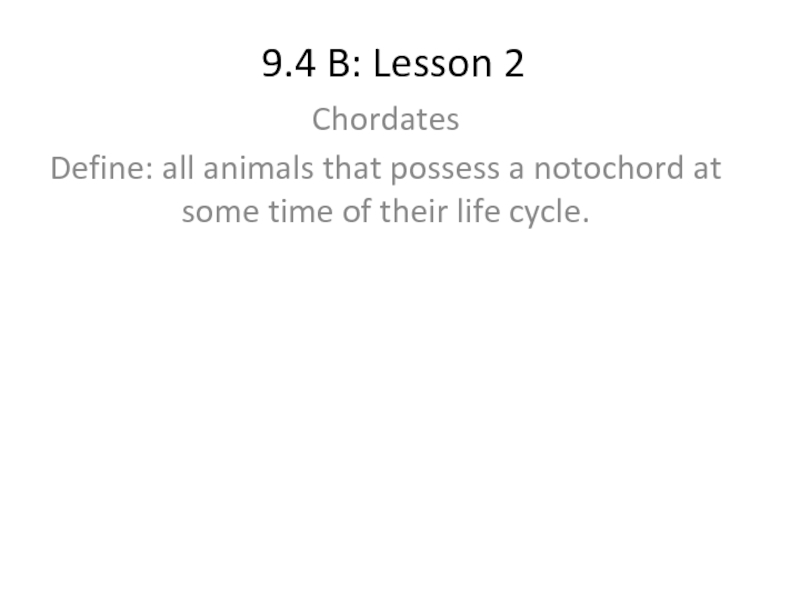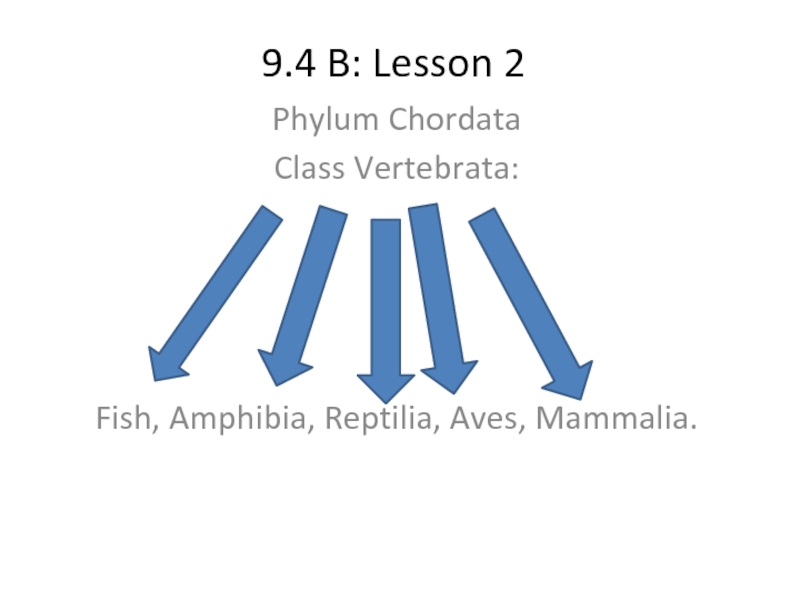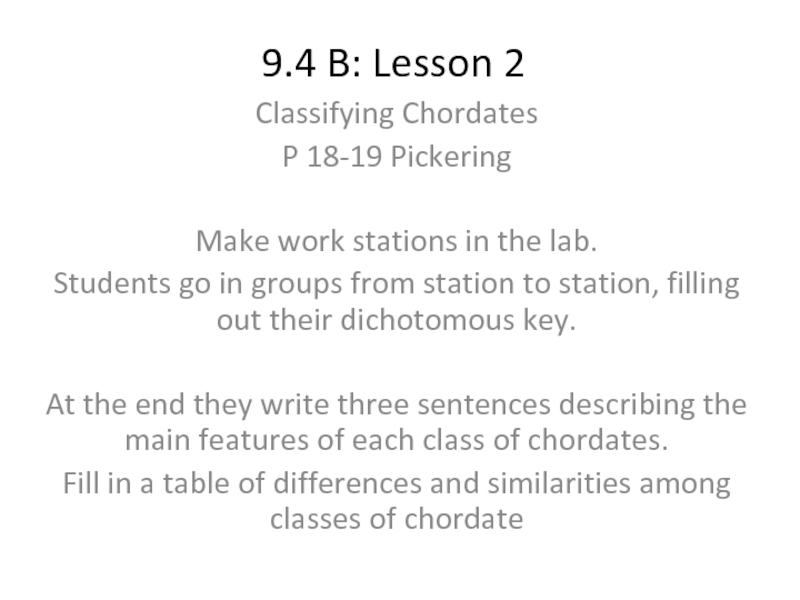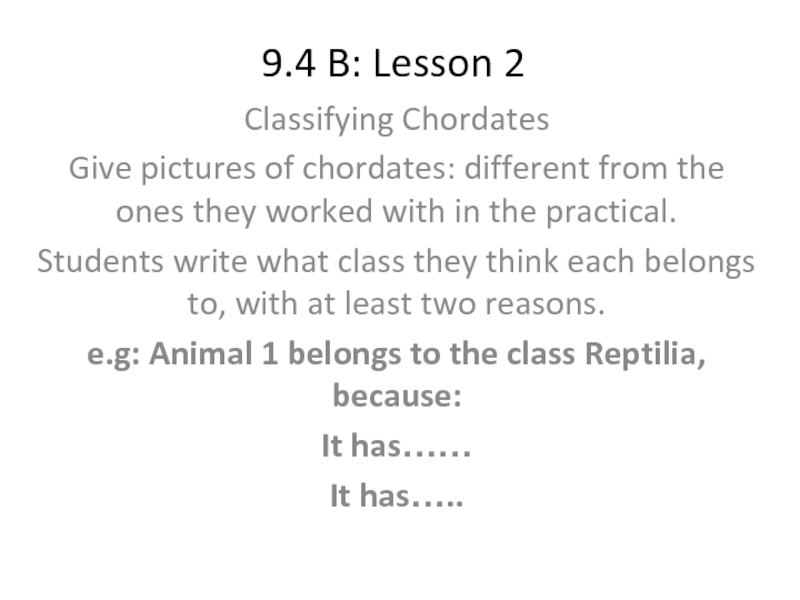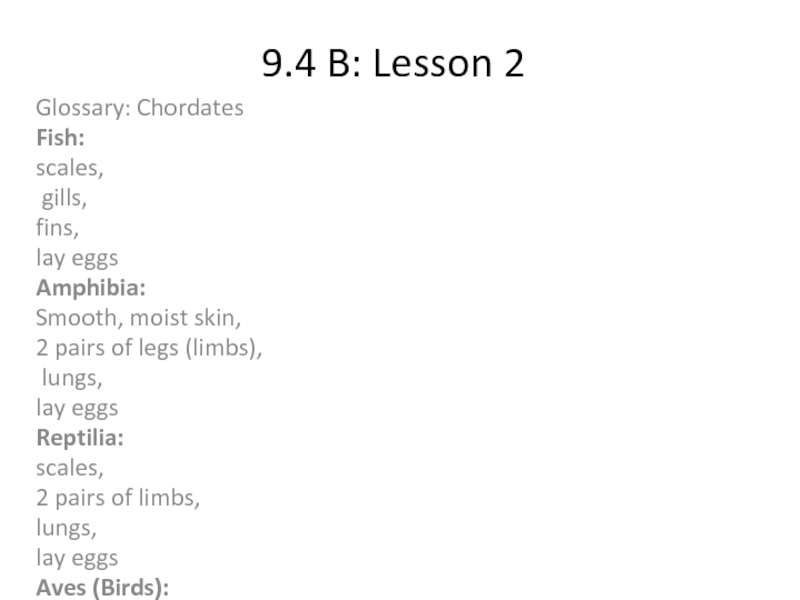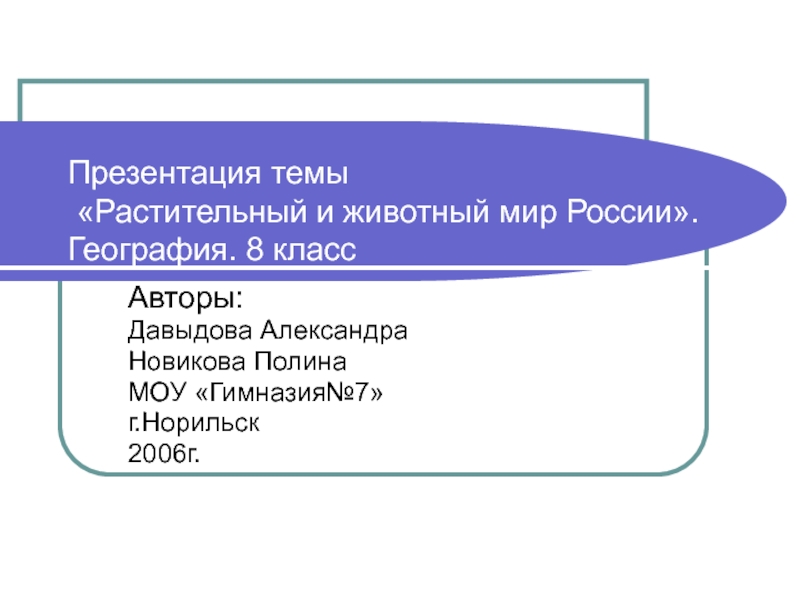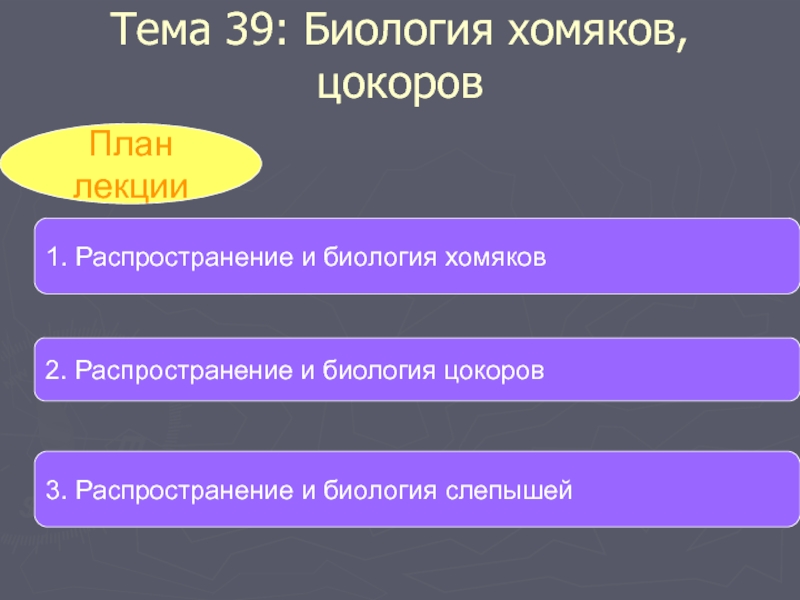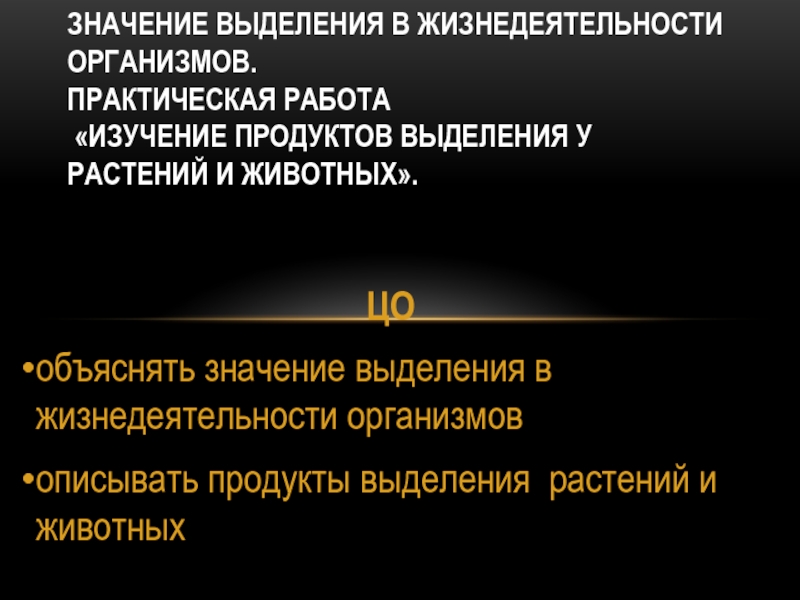some time of their life cycle.
- Главная
- Разное
- Дизайн
- Бизнес и предпринимательство
- Аналитика
- Образование
- Развлечения
- Красота и здоровье
- Финансы
- Государство
- Путешествия
- Спорт
- Недвижимость
- Армия
- Графика
- Культурология
- Еда и кулинария
- Лингвистика
- Английский язык
- Астрономия
- Алгебра
- Биология
- География
- Детские презентации
- Информатика
- История
- Литература
- Маркетинг
- Математика
- Медицина
- Менеджмент
- Музыка
- МХК
- Немецкий язык
- ОБЖ
- Обществознание
- Окружающий мир
- Педагогика
- Русский язык
- Технология
- Физика
- Философия
- Химия
- Шаблоны, картинки для презентаций
- Экология
- Экономика
- Юриспруденция
Chordates. (Lesson 2) презентация
Содержание
Слайд 39.4 B: Lesson 2
Classifying Chordates
P 18-19 Pickering
Make work stations in the
lab.
Students go in groups from station to station, filling out their dichotomous key.
At the end they write three sentences describing the main features of each class of chordates.
Fill in a table of differences and similarities among classes of chordate
Students go in groups from station to station, filling out their dichotomous key.
At the end they write three sentences describing the main features of each class of chordates.
Fill in a table of differences and similarities among classes of chordate
Слайд 49.4 B: Lesson 2
Classifying Chordates
Give pictures of chordates: different from the
ones they worked with in the practical.
Students write what class they think each belongs to, with at least two reasons.
e.g: Animal 1 belongs to the class Reptilia, because:
It has……
It has…..
Students write what class they think each belongs to, with at least two reasons.
e.g: Animal 1 belongs to the class Reptilia, because:
It has……
It has…..
Слайд 59.4 B: Lesson 2
Glossary: Chordates
Fish:
scales,
gills,
fins,
lay eggs
Amphibia:
Smooth,
moist skin,
2 pairs of legs (limbs),
lungs,
lay eggs
Reptilia:
scales,
2 pairs of limbs,
lungs,
lay eggs
Aves (Birds):
feathers,
a pair of wings,
a pair of legs,
beak,
lungs,
lay eggs
Mammals:
dry smooth skin,
fur/hair on the skin,
do not lay eggs,
give birth to live babies
2 pairs of legs (limbs),
lungs,
lay eggs
Reptilia:
scales,
2 pairs of limbs,
lungs,
lay eggs
Aves (Birds):
feathers,
a pair of wings,
a pair of legs,
beak,
lungs,
lay eggs
Mammals:
dry smooth skin,
fur/hair on the skin,
do not lay eggs,
give birth to live babies
